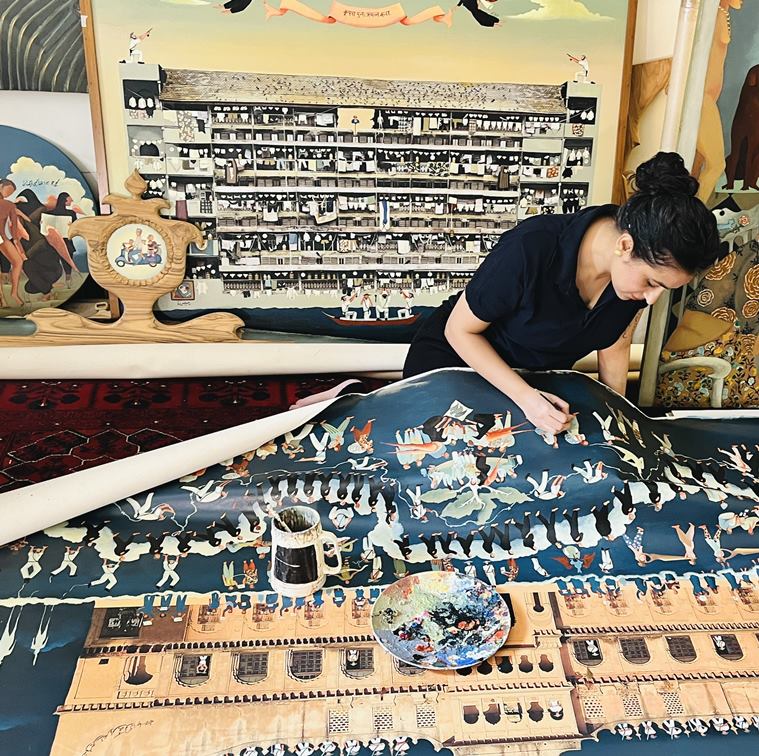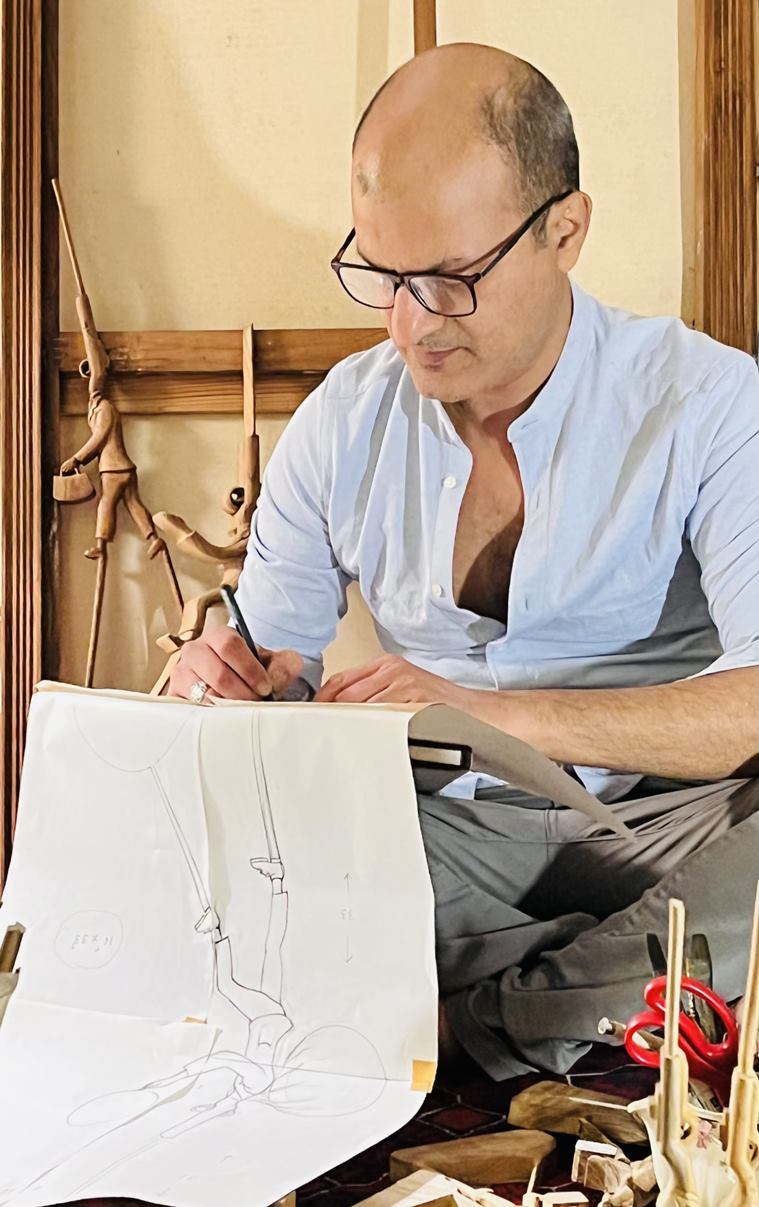Artists Baaraan Ijlal and Moonis Ijlal’s layered works share untold stories
'The pandemic only heightened the split character of the city'
 In the exhibition titled "Hostile Witness", the two are both spectators and participants.
In the exhibition titled "Hostile Witness", the two are both spectators and participants.Artists Baaraan Ijlal and Moonis Ijlal present a compelling plea — forgotten testimonies and silence needs to be recorded and fragile structures tell tales of their inhabitants that might soon be lost. In the exhibition titled “Hostile Witness”, the two are both spectators and participants. In her fantastical narratives in rich colours, Baaraan gives life to crumbling structures — from her ancestral home in Bhopal to Parsi Colony in Mumbai and Alexandra Court in Calcutta, among others — adding occupants and telling stories of lived spaces. There are also characters that are mythical, with traits given by Baaraan and Moonis. The latter also builds sculptures that support and depict ongoing conversations. The two talk about the process of making their art and how listening is key to their practice.
If you could talk about the conceptualision of “Hostile Witness”. It is informed by fragile architectural structures and associated memories, but also your personal memories of your ancestral home in Bhopal.
Baaraan: It began with me archiving what remained of my ancestral house then the neighbourhood, the fragile parts of the city, street by street before they get erased. The archiving included listening to people, extensive photographing of the sites and digging for buried accounts in literary sources and city archives. The listening became key to my art practice and took me to other cities and their many untold stories. Each adding a layer to the canvas.
Is the project as much about memories associated and the sites, and the fear of losing both? If you could talk about the process of planning these works.
Baaraan: It is primarily about the fear of erasure, of our unarchived bodies. It is about creating witnesses to the narratives of loss and desire because erasure is real…women, trans bodies face erasures all their lives. When the architecture of our planet is reconfiguring, when will these narratives of loss be heard?
As I witness the evolving site, I archive these narratives in paintings.

The exhibition also features works that project disparities that have become more evident during the pandemic. Could you please talk about that?
Baaraan: The pandemic only heightened the split character of the city. The split that one saw during the pandemic was quite glaring. The cities were as usual a mute spectator of the horrors of the pandemic. The long march back home is an image that has stayed and recurs in many works.
What prompted the development of characters along with your brother, historian and artist Moonis Ijlal? Can you share the process of their conceptualization?
Moonis: The symbolic characters surfaced in sculptures and paintings when we conceptually agreed over the larger principle of Hostile Witness. It argues that the planet’s climate crisis is inextricably linked with the social crisis which will automatically be mitigated if humans call out loud and fix the historical wrongs that have normalised economic and social discrimination. But handcuffed to our privileges, will we call it out, or will we remain in the state of Jehel (the silence and the phobic) and submit to the Jaabir (the oppressor) within us and back the status quo? Colonising lives of women, indigenous peoples, sexual, racial and other minorities with a social licence, the status quo that has already wiped of millions of species.
We see it as a recurring narrative of loss and damage, and as such, it can be narrated through literary symbols of hope and oppression which have evolved to acknowledge the wrongs of the very tradition they belong to.

Listening is crucial to your process of making art. If you could talk about that, particularly in context to Change Room, with sound recordings replete with stories. Did these conversations continue during the pandemic?
Baaraan: Listening for me is witnessing the self and each other. As I stand witness to the other person’s lived experiences, they do the same. In my art only the mediums change and carry these stories forward. I began the sound installation Change Room with anonymously recording my own voice over the phone. This was in 2018. Change Room has been live since then. It is an open channel of voices of people from diverse backgrounds sharing their stories openly and anonymously. The recordings continued over the phone during the pandemic. It is mostly the women who have responded to it.
I believe you have also been sketching during the pandemic and noting your thoughts. Was this also an act of catharsis?
Baaraan: I call my sketchbook/notebook a ‘book of now’ because it archives the everyday. But during the first and second wave of the pandemic it became my survival diary.
📣 For more lifestyle news, follow us on Instagram | Twitter | Facebook and don’t miss out on the latest updates!
- 01
- 02
- 03
- 04
- 05



























